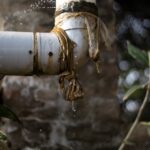
If you have noticed a loss of water pressure in the shower or while doing dishes lately, the culprit may very well be a leaky pipe. This can be maddening, and sometimes, getting to the bottom of the problem if you can’t physically access your pipes can be even worse! That’s why we’re here to help.
A leaky pipe can cause massive damage to your property in a variety of ways. You can experience structural damage to your home or building or mold and mildew begin to grow. These leaks can affect not only the walls and floors but can also damage personal property, furniture, and other items.
Leaks in your pipes can send your water bill payments soaring through the roof while reducing your water pressure. They can also cause water contamination leading to health risks and lower water quality. In addition, you can experience pest infestations such as termites and rodents. It also increases the risk of electrical hazards due to water coming into contact with wires and appliances.
So if you do have access to your plumbing pipes, inspect the pipe fittings and make sure none of them are leaking.
To find a leaky pipe, you want to look out for warning signs. There are some clear signs of a compromised pipe such as mold/mildew growth, visible water damage, and sudden spikes in your water bill. However, a few other things can help you determine if your pipes need maintenance.
Sometimes your pipes are in between floorboards or in your walls, so you can’t reach them. If that’s the case, give the following methods a shot:
If you can’t see water spots or damage then there are a few ways to put your other senses to work to find hidden leaks. The floors or walls near drains or sewers will emit a foul odor if there is a leak, and you may be able to hear water running even if all your fixtures are turned off.
Once you have zeroed in on the leak you can get it patched up, or, if you’re able, move on to the large selection of pipes carried by Detroit Nipple Works for a fresh start, including PVC, copper, stainless steel, and galvanized pipes. We also offer a variety of pipe fittings. Contact us today and let us see what we can do for you!